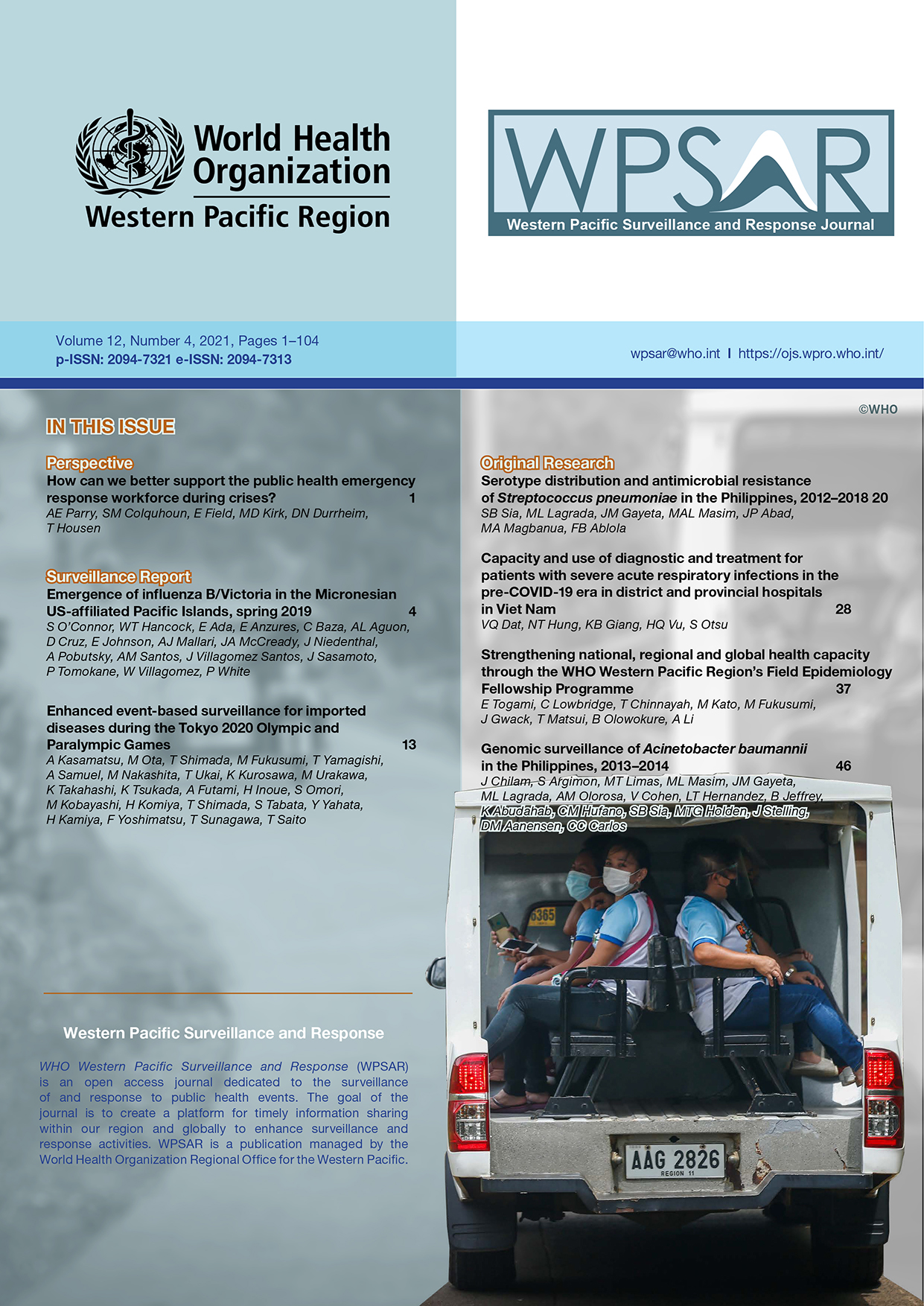Genomic surveillance of Acinetobacter baumannii in the Philippines, 2013–2014
DOI:
https://doi.org/10.5365/wpsar.2021.12.4.863Abstract
Objective: Acinetobacter baumannii is an opportunistic nosocomial pathogen that has increasingly become resistant to carbapenems worldwide. In the Philippines, rates of carbapenem resistance and multidrug resistance are above 50%. We undertook a genomic study of carbapenem-resistant A. baumannii in the Philippines to characterize the population diversity and antimicrobial resistance mechanisms.
Methods: We sequenced the whole genomes of 117 A. baumannii isolates recovered by 16 hospitals in the Philippines between 2013 and 2014. From the genome sequences, we determined the multilocus sequence type, presence of acquired determinants of antimicrobial resistance and relatedness between isolates. We also compared the phenotypic and genotypic resistance results.
Results: Carbapenem resistance was mainly explained by acquisition of the class-D Beta-lactamase gene blaOXA-23. The concordance between phenotypic and genotypic resistance to imipenem was 98.15%, and it was 94.97% overall for the seven antibiotics analysed. Twenty-two different sequence types were identified, including 7 novel types. The population was dominated by the high-risk international clone 2 (i.e. clonal complex 92), in particular by ST195 and ST208 and their single locus variants. Using whole-genome sequencing, we identified local clusters representing potentially undetected nosocomial outbreaks, as well as multi-hospital clusters that indicated interhospital dissemination. Comparison with global genomes suggested that the establishment of carbapenem-resistant international clone 2 in the Philippines is likely the result of clonal expansion and geographical dissemination, and at least partly explained by inadequate hospital infection control and prevention.
Discussion: This is the first extensive genomic study of carbapenem-resistant A. baumannii in the Philippines, and it underscores the importance of hospital infection control and prevention measures to contain high-risk clones.

